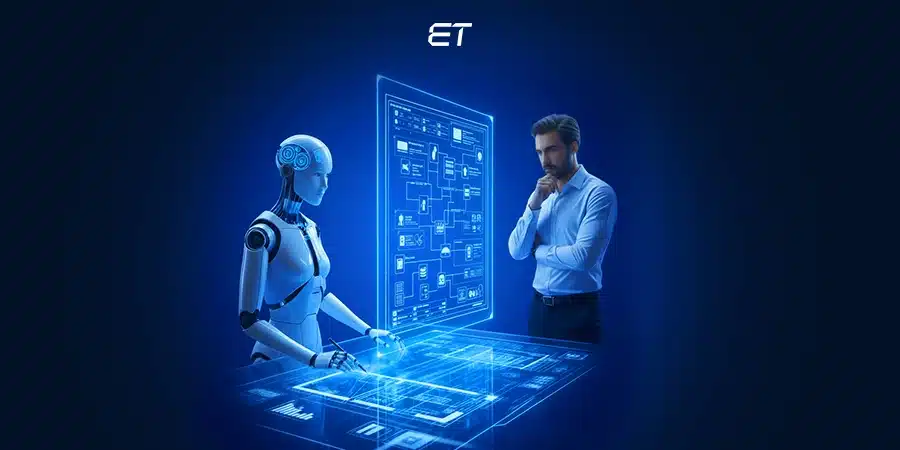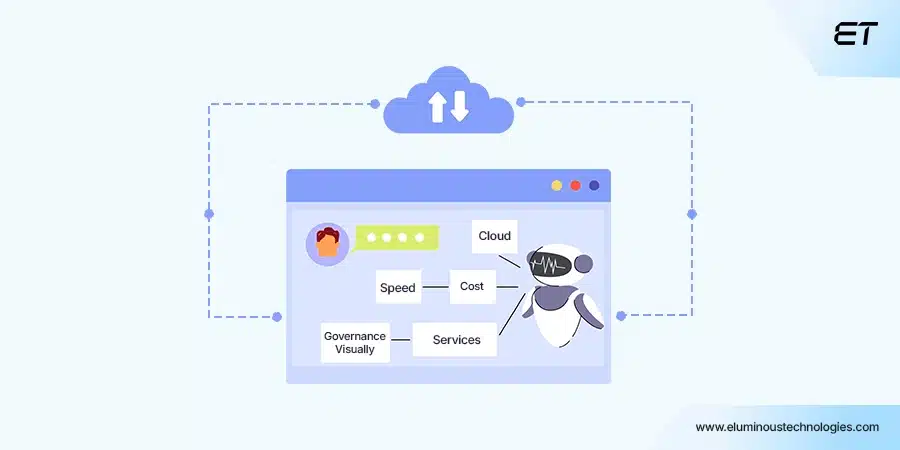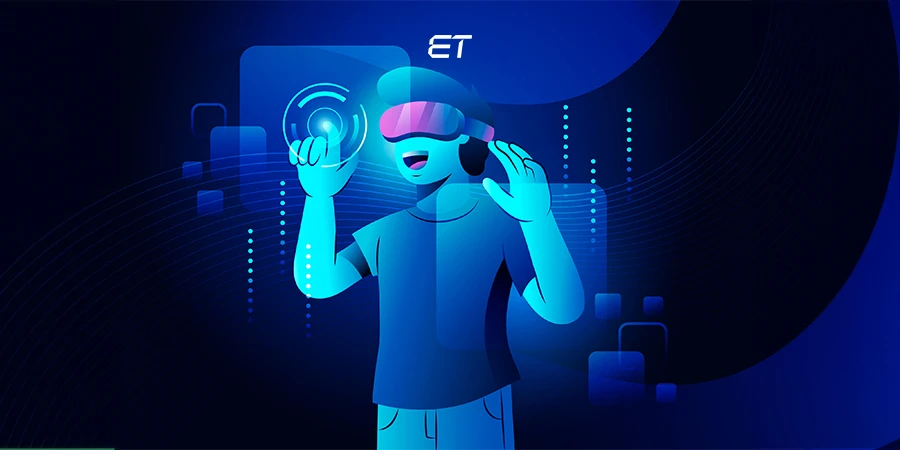
How CTOs Are Redefining Software Architecture with AI Agents
- AI agents are evolving into core components of modern software architecture.
- CTOs use agents to balance speed, cost, scalability, and governance.
- Enhanced code generation ensures consistency, security, and alignment with enterprise architecture.
- Agents embed compliance, governance, and security directly into system workflows.
- DevOps and CI/CD pipelines become adaptive, automated, and architecture-driven.
- Early adoption helps CTOs build resilient, future-ready, agent-powered software ecosystems.
Software architecture has always been about balancing speed, scalability, and stability. But that balance is breaking. As systems grow more distributed and business demands accelerate, the old playbook is running out of answers.
As a CTO, you may realize that traditional approaches built on layered systems and microservices are no longer enough. That’s where AI agents step in.
Far beyond simple copilots, agents act as autonomous, task-driven components that can plan, execute, and adapt workflows. Instead of being just support tools, they’re becoming building blocks of modern architecture.
Forward-thinking CTOs are using agents to orchestrate services, manage context, and embed governance into system design. This post explores how AI is redefining modern software architecture and what the future holds.
Want to go AI all the way? Drop in your details and our AI experts will get right back to you.
The Rise of AI Agents in Software Architecture

AI agents are capable of handling complex workflows, making contextual decisions, and integrating deeply with enterprise systems. But there are plenty more reasons why they’re becoming key in software architecture.
- Enterprise-Ready by Design – Modern architectures are already cloud-native and API-first. AI agents help connect, coordinate, and optimize across services.
- Beyond Productivity Gains – AI agents aren’t just coding assistants anymore. They’re becoming architectural players by automating DevOps pipelines, managing service interactions, and accelerating incident resolution.
- Governance Built into the System – Instead of bolting on compliance later, CTOs can now embed policies, security rules, and audit checks directly into agent workflows. It ensures governance is part of the architecture itself.
For CTOs, the rise of agents is pivotal. Traditional architecture has always required trade-offs between speed, cost, and control. Agents change the equation:
- Faster deployments and adaptive scaling through autonomous orchestration.
- Reduced manual effort and optimized infrastructure usage.
- Built-in guardrails that ensure systems stay compliant without slowing innovation.
In short, AI agents are becoming building blocks of how modern architecture is designed, governed, and evolved.
Read all about AI agents, their types, functions, workflow, and more.
5 Ways AI Agents Are Reshaping Software Architecture
From smarter coding, workflow orchestration, to resource optimization, here’s how AI agents are rewriting the software architecture rules.
1. Enhanced Code Generation

CTOs are using agents to modify and improve code generation, which is far beyond autocomplete. Agents are now key components of the development lifecycle, producing not just snippets but entire modules.
What does this mean for business leaders? Let’s find out:
- Consistency at Scale – Agents ensure generated code follows enterprise coding standards, design patterns, and security guidelines.
- Context-aware Development – By pulling in documentation, APIs, and past code, agents generate code that fits seamlessly into the existing architecture.
- Automated Refactoring – Agents can optimize or restructure codebases, improving maintainability and reducing technical debt.
- Faster Prototyping – Teams can spin up new services or integrations quickly, accelerating time-to-market without sacrificing architectural integrity.
So, software architecture evolves faster, with less fragmentation risks, as agents generate code aligned with the bigger architectural vision.
2. Embedding Governance, Security, and Compliance into Architecture

In traditional software architecture, governance and compliance usually come in late. Business leaders handle them through audits, reviews, or manual checks after the system is already built.
AI agents are changing that model by embedding governance directly into the architecture itself. How this plays out:
- Policy-driven Workflows – Agents enforce rules around data usage, access control, and approvals right during task execution.
- Continuous Compliance – Instead of periodic audits, agents monitor pipelines and deployments in real time to ensure every release aligns with security standards.
- Proactive Risk Management – Agents can detect anomalies, flag potential breaches, and even auto-remediate minor issues before they escalate.
- Audit-ready Systems – Logging and tracing every agent decision is convenient, creating a transparent record for compliance teams.
For CTOs, this means governance shifts from being a bottleneck to becoming a built-in architectural layer. Speed, security, and compliance can coexist seamlessly.
3. Automating DevOps and CI/CD Pipelines

DevOps and CI/CD pipelines directly shape how software architecture evolves. Every build, deployment, and rollback decision impacts system stability.
With AI agents automating these processes, the architecture itself becomes more adaptive and resilient:
- Consistent Patterns – Agents enforce standardized deployment models, ensuring services across the architecture follow the same design and security principles.
- Adaptive Scaling – By managing environments dynamically, agents align infrastructure with architectural goals like elasticity and fault tolerance.
- Reduced Architectural Drift – Automated updates and rollbacks prevent inconsistencies that often creep in while managing pipelines manually.
- Feedback-driven Evolution – Agents analyze logs, performance data, and failures, then feed insights back into the architecture for ongoing refinement.
For CTOs, pipelines become more than just operational layers, enabling systems that are self-correcting, consistent, and scalable. With AI agents, pipelines reduce downtime and accelerate time-to-market without sacrificing control.
Stop looking for the best DevOps practices when you can save time. We have compiled the list with vital details.
4. Human-Agent Collaboration as a Core Design Principle

Software architecture has traditionally been designed for human teams working with tools and processes. But with AI agents, collaboration itself is becoming an architectural principle.
Systems now can’t just support service-to-service communication, but also human-to-agent and agent-to-agent interaction. Here’s how these changes are impacting system/software architecture:
- Interfaces for Collaboration – APIs, dashboards, and orchestration layers are evolving to enable humans to delegate tasks while maintaining oversight.
- Feedback Loops – Architectures now need mechanisms for agents to hand off tasks, flag uncertainties, or request clarification from humans in real time.
- Shared Context – Knowledge bases, vector stores, and structured repositories ensure that both humans and agents work with the same architectural truth.
- Governance by Design – Collaboration workflows embed human-in-the-loop checkpoints where business or compliance judgment is essential.
This marks a fundamental shift for companies. From static, human-only systems, architectures are now live, where humans and AI agents operate as true partners. Together, they’ll shape resilient, adaptive, and continuously evolving software ecosystems.
5. Dynamic Resource Optimization

Resource allocation has always been a critical architectural concern. Balancing performance, scalability, and cost across distributed systems isn’t simple. Traditionally, this required manual tuning, predefined scaling rules, or adjustments.
With AI agents, resource optimization becomes dynamic and continuous, reshaping architecture design and management:
- Self-adjusting Infrastructure – Agents monitor workloads in real time and automatically reallocate compute, storage, or network resources, ensuring the architectural balance.
- Policy-driven Efficiency – Instead of fixed thresholds, agents enforce architectural policies like cost limits, latency targets, and compliance rules when allocating resources.
- Improved Fault Tolerance – Agents reroute workloads or spin up redundant services during failures, embedding resilience directly into the architecture.
- Feedback into Design – Continuous monitoring allows agents to suggest architectural refinements, such as refactoring services that overuse resources.
So, architecture will now evolve with demand, operating as a self-optimizing system that aligns cost, performance, and scalability.
Preparing for Agent-Driven Architectural Change

For CTOs, embracing AI agents requires rethinking the foundation of software architecture. Preparing for this shift involves both technical readiness and organizational alignment.
Key steps or tips to prepare include:
- Start with Pilot Use Cases – Identify areas like CI/CD, governance, or incident response where agents can deliver quick wins without high risk.
- Redesign for Collaboration – Build interfaces, feedback loops, and shared context layers that allow seamless human-agent interaction.
- Embed Governance Early – Ensure policies, security, and compliance rules are baked into agent workflows, not bolted on later.
- Invest in Observability – Establish tracing, monitoring, and evaluation systems to keep agent-driven architectures transparent and accountable.
Also, upskill your engineers, architects, and risk managers to work with agents as co-creators of modern architecture for software.
Final Thoughts
AI agents are steadily becoming part of the software architecture blueprint. CTOs must lead the shift by building adaptive, self-optimizing systems that balance speed, governance, and long-term resilience.
The real opportunity lies in using agents as architectural citizens for orchestrating workflows, embedding compliance, and optimizing resources. This redefines the role of architecture from being a static framework to an evolving ecosystem.
Thus, those who act early will shape architecture software that is efficient and also resilient to the changing business demands.
If you want help integrating AI in your architecture, we can guide you. Our developers have delivered over 300 successful projects till date.
Frequently Asked Questions
1. What’s the biggest architectural advantage of AI agents?
AI agents create adaptive architectures that have systems capable of self-optimization, compliance embedding, and continuous evolution. These advantages reduce manual intervention and operational risk.
2. Where should CTOs start when adopting AI agents?
CTOs must begin with high-value use cases like CI/CD pipelines, governance checks, or incident response before scaling into architecture software.
3. Do AI agents replace developers or architects?
No. They augment teams by automating repetitive tasks and enforcing architectural patterns, while humans still make critical decisions.



